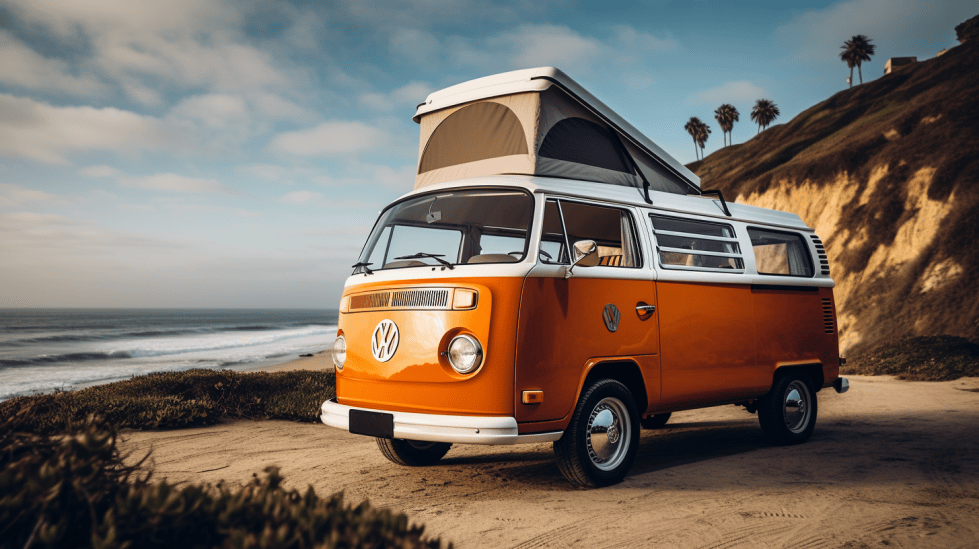How to Survive Living in Your Car
Living in your car can be a daunting prospect, especially when circumstances force you to do so. However, with a bit of preparation and adaptability, it is possible to survive and even thrive during this unconventional living situation. Whether you’re dealing with financial hardships, a nomadic lifestyle, or a temporary living arrangement, understanding the essentials of car living is crucial to making the experience as safe and comfortable as possible.
Choosing the right vehicle, creating a cozy living space, and ensuring your safety and security are all vital components of successfully living in your car. Additionally, managing your basic needs, finding ideal parking locations, and being prepared for various weather conditions are crucial aspects of this unique way of life. Navigating the legal and social aspects of car living, preparing for emergencies, and maintaining a healthy lifestyle while on a tight budget are also important considerations.
Key Takeaways
- Proper planning, safety, and adaptability are essential for successful car living.
- Manage basic needs and adjust to various challenges, including weather and finding parking.
- Address legal, social, and health aspects while maintaining a cost-effective lifestyle.
Choosing the Right Vehicle
When it comes to surviving and living in your car, choosing the right vehicle is crucial. In my experience, a larger vehicle is often a more viable option for both short-term car camping trips, and longer-term living situations. Larger vehicles, such as a camper van, allow for more space to sleep and store belongings while still providing mobility and freedom.
For those who plan on taking car camping trips occasionally or traveling long distances, a camper van is an excellent choice. These vehicles come equipped with built-in amenities such as a bed, kitchenette, and sometimes even a bathroom. Not only does this save you from having to purchase additional camping gear, but it also provides a comfortable, secure space to live in. If you’re not looking for a full-time living arrangement, renting a camper van can also be an economical option for extended trips.
On the other hand, if you’re considering living in your car for an extended period, it’s important to think about vehicle reliability and fuel efficiency. Your vehicle should be well-maintained and able to withstand the wear and tear of constant use. In this scenario, I would recommend investing in a van or larger SUV, since these vehicles typically offer more interior space and have better insulation for harsher weather conditions.
Ultimately, the right vehicle for you will depend on your specific needs and budget. Whichever vehicle you choose, it’s essential to prioritize space, comfort, and functionality in order to successfully live in your car.
Creating a Safe and Comfortable Living Space
Managing Your Sleeping Area

When living in your car, one of the most important aspects is creating a comfortable sleeping area. I recommend using the back seat, as it usually provides enough space for a person to stretch out. First, consider removing any unnecessary items from the back seat to create more space. If the rear seats are foldable, even better; folding them down can help increase the sleeping area. Depending on personal preference, a camping air mattress or sleeping pad can be used to create a cushioned surface to sleep on.
Organizing Your Storage Space
With limited space, organizing your storage is crucial. Start by compartmentalizing the front seat, trunk, and any other available storage compartments. Use storage bins, containers, or plastic bags, if necessary, to separate personal belongings, clothes, and food. Keeping your belongings organized and easily accessible will make living in your car more manageable. Additionally, consider investing in solar panels to charge your car battery and power electronic devices without overusing the car battery itself.
Maintaining Cleanliness
Maintaining cleanliness while living in a car may seem challenging, but it’s essential for both mental and physical wellbeing. First, I suggest investing in a trash bag or small trash bin to easily dispose of waste and keep your small living space neat. Regularly clean surfaces and vacuum the interior of the car to prevent dust and dirt buildup. Finally, make sure to air out the car daily to ensure fresh air circulation and prevent any musty smells from developing.
By applying these tips and staying organized, living in a car can be a more comfortable and safe experience. Remember to keep a positive attitude and stay flexible when it comes to adapting to this unique lifestyle
Protection and Security
When living in my car, I prioritize my protection and security. It’s essential that I find a safe place to park overnight. I look for well-lit areas with security guards, such as 24-hour supermarkets and shopping centers. While these places often have more foot traffic, the presence of security personnel provides an added layer of safety.
I avoid parking on private property without permission, as it puts me at risk of trespassing charges or having my vehicle towed. Instead, I search for public places where I can park without legal repercussions. Websites and apps that cater to the van life community can be particularly helpful in locating safe parking spots.
To further ensure my safety, I always lock all doors and windows while I’m inside the car. I also invest in window shades or curtains to prevent potential intruders from scouting my belongings. These also help maintain privacy and create a more comfortable living environment.
In case of an emergency or if I feel threatened, I carry pepper spray with me. This non-lethal self-defense tool provides a sense of protection without requiring any special training or licenses. I make sure to keep it within reach and familiarize myself with its proper usage.
Moreover, I maintain a low profile to avoid drawing unnecessary attention to myself. This includes keeping my car clean and organized, limiting the use of electronics that emit light, and refraining from displaying valuable items in plain sight. By adopting these practices, I can maintain a sense of security while living in my car.
Managing Basic Needs
Taking Care of Hygiene

When living in my car, maintaining personal hygiene is essential. One option for access to a clean restroom and shower is to acquire a gym membership. This provides a regular place to take care of my hygiene needs. Furthermore, I look out for public restrooms and homeless shelters during the day. Always, I keep a supply of toilet paper and a water bottle handy for these situations. Additionally, having a portable toilet is helpful, just in case traditional facilities aren’t immediately available.
Preparing and Storing Food
For food preparation and storage, considering the limited space in my car, it’s essential to be well-organized and efficient. Grocery shopping at grocery stores, I focus on fresh fruits and non-perishable items that don’t require refrigeration. A simple meal plan includes:
- Breakfast: granola bars, yogurt, fruit
- Lunch: sandwiches, protein bars
- Dinner: canned soup or beans, vegetables, and crackers
To store my food, I use a cooler or an insulated bag. It’s also a good idea to have a few essential utensils like a can opener, a knife, and a spork. To cook or prepare hot meals, a compact camping stove can be used.
Staying Connected
When living in my car, staying in touch with society is crucial. For internet access, I seek out places that offer free Wi-Fi, such as coffee shops, public libraries, or fast-food restaurants. I also utilize gas stations and public facilities to charge my devices when necessary. Investing in solar panels to provide a source of renewable energy is a viable option, especially when living in the car for extended periods. Another option for storage purposes is a storage unit, which can help keep my valuable items safe and allows for some extra organization outside of the car.
Remember to maintain a regular routine, even when living in my car, staying connected helps alleviate the difficulties faced during this lifestyle. Staying confident and knowledgeable about all available options ensures that I can adapt and thrive even in challenging circumstances.
Finding Ideal Parking Locations
Urban Parking Tactics
In urban areas, several parking options can serve as suitable places to sleep in your car. Some popular choices include Walmart parking lots and Home Depot parking lots. Most of these stores permit overnight parking, and they provide a safe and convenient location. Another option I’ve found helpful is a church parking lot, as they are generally quiet and not in use during the night.
It’s important to be cautious and discreet when parking in urban locations. I recommend choosing well-lit areas close to security cameras, and always pay attention to parking signs and local regulations to avoid fines or towing.
Rural and Wilderness Parking Options

When venturing outside urban areas, there’s an abundance of parking options in rural and wilderness areas. Some of my go-to choices include:
- Truck stops: These provide a safe environment with amenities such as restrooms, showers, and food options. Many truck stops welcome overnight parking for cars and RVs.
- Rest areas: Located along highways, rest areas offer a convenient place to stop and rest. Generally, they allow parking for a limited time, usually up to 8 hours.
- Public parks: While not all public parks permit overnight parking, some do. Be sure to check with the park authorities beforehand.
- National forests and BLM land: Both national forests and Bureau of Land Management (BLM) lands are often available for overnight parking. These locations offer privacy and a connection with nature, but be prepared for limited access to amenities.
Additionally, for those looking to explore national parks, I suggest researching nearby overnight parking options, as not all national parks allow vehicle camping.
In summary, whether in an urban setting or a rural setting, finding the right parking location is crucial for successfully living out of your car. It not only ensures safety and legality but also provides a comfortable and stress-free experience.
Preparing for All Weather Conditions
Keeping Warm in Winter

During winter, it’s critical to make sure I stay warm while living in my car. Cold weather can be harsh, so it’s essential to have appropriate sleeping materials. One of the best options is a camping air mattress or a camp-friendly sleeping pad since they save space and can be stowed away during the day source. Moreover, it’s a good idea to use blankets, a sleeping bag, or a warm comforter to retain body heat during sleep.
Another crucial aspect of surviving in cold climates is keeping my car warm. Insulating the car with window covers, and using a portable propane heater safely can help maintain a comfortable temperature inside the vehicle. Wearing appropriate clothing, like thermal layers and warm socks, is also essential to stay warm during winter months.
Staying Cool in Summer
On the other hand, staying cool during summer can be challenging but is equally essential for my comfort. I should pay attention to parking my car in shaded areas and using reflective sunshades to minimize the heat. Opening the windows slightly for ventilation or using a portable fan can also help circulate air inside the car.
Staying hydrated is crucial in hot weather, so I need to make sure I always have access to cold water. I can store water bottles in an insulated bag or cooler to maintain their temperature. Another useful technique is to soak a towel in cold water and place it around my neck to help combat the heat.
Overall, by preparing for all weather conditions and taking the necessary precautions, I can ensure a more comfortable and safe experience while living in my car.
Dealing with Legal and Social Aspects

Living in my car has taught me that dealing with legal and social aspects is crucial for a smooth experience. One of the first things I learned was the importance of having a working cell phone. It not only helps me stay connected with family members, but also serves as a lifeline in case of emergencies.
In order to avoid legal issues, I had to familiarize myself with local laws and regulations. I learned that spending a long time in my car wasn’t typically a problem as long I didn’t trespass or park somewhere unauthorized (FindLaw). To avoid this, I make sure to park in public places where overnight parking is allowed. This helps me avoid unnecessary confrontations with law enforcement.
Maintaining my mental health while living in my car had its own challenges. I found it crucial to maintain a routine and seek out human connections wherever possible. Even simple interactions in public spaces, like a park or library, could make all the difference in lifting my spirits and preventing feelings of isolation.
Lastly, I discovered the power of building connections within the homeless communities. Many people living in their vehicles have valuable advice and experiences to share. By building a support network, I found the process of living in my car to be less daunting and easier to navigate.
In conclusion, staying mindful of legal and social aspects is essential for anyone living in their car. Staying connected with loved ones, following the law, focusing on mental health, and building connections within homeless communities can help create a more manageable and satisfying experience.
Emergency Situations
In my experience, one of the most critical aspects of surviving while living in your car involves being prepared for emergency situations. One such situation is dealing with a flat tire. I always keep a spare tire in my car, as well as tools like a lug wrench, a jack, and a tire pressure gauge. They have helped me more than once in a pinch, and I’d suggest everyone do the same.
Another important item to have in your car is a set of jumper cables. I’ve learned that a dead battery can happen unexpectedly, and having jumper cables on hand has allowed me to quickly recharge my battery by connecting it to another vehicle. This simple item can save a lot of time and inconvenience in the long run.
Here are a few more essential items I keep in my car in case of emergency:
- First aid kit: Accidents and injuries can happen, and having a well-stocked first aid kit can make all the difference in protecting your health. Ensure it contains adhesive bandages, gauze pads, adhesive tape, antiseptic wipes, and any necessary prescription medications.
- LED flashlight: In case of a power outage or car breakdown during the night, a flashlight is crucial to see and signal for help.
- Reflective triangles or emergency flares: Visibility is essential during a nighttime emergency. These items can alert oncoming traffic to your presence and keep both you and your vehicle safe from collisions.
- Food and water: It’s essential to keep non-perishable snacks and some bottled water in your car. In an emergency, you’ll want to ensure you have enough sustenance to keep yourself going until help arrives.
When it comes to car repair, I’ve been able to handle minor fixes on my own, like changing a flat tire or jumping a dead battery. However, for more severe issues, it’s best to have a reliable roadside assistance service to call upon, as they can provide their expertise in repairing your vehicle or towing it to a safe location for further inspection.
In summary, being prepared for emergency situations while living in your car comes down to having the right tools and resources at your disposal. By stocking your vehicle with essential items like a spare tire, jumper cables, and a first aid kit, you’ll be able to handle most emergencies and continue living in your car comfortably. Remember, staying confident and knowledgeable about potential emergencies can make all the difference when the unexpected occurs.
Maintaining a Healthy Lifestyle
Living in my car presents unique challenges, so it’s essential to be proactive about self-care. I’ve found success in focusing on personal hygiene, sleep quality, exercise, nutrition, and mental wellbeing.
For personal hygiene, I always keep a supply of wet wipes, hand sanitizer, and a portable solar shower on hand. Staying fresh and clean makes a huge difference in how I feel each day. It’s also helpful to locate nearby public restrooms and maintain a routine for showering and grooming.
Getting a good night’s sleep is crucial, so I’ve made my car as comfortable as possible. I invested in a high-quality sleeping pad and a comfortable pillow to ensure proper support while sleeping. Also, I’ve covered the windows with car shades for privacy and to block out light.
Physical activity is vital for both my physical and mental wellbeing. Despite the constraints of living in a car, I still find opportunities to stay active. Whether it’s a daily walk or workout routine, exercise helps me stay healthy and manage stress.
Maintaining a balanced diet can be challenging when living in a small space, but it is still possible. I focus on nutrient-dense, non-perishable foods like nuts, canned fish, and dried fruits. I pack a cooler with fresh fruits and vegetables, and when possible, I use a portable stove or compact cooking kit to prepare meals. Drinking plenty of water is essential too, so I keep reusable water bottles on hand and refill them at public fountains or rest stops.
Lastly, spending time outdoors and getting fresh air helps me stay grounded and maintain a positive mindset. I often find parks or natural spaces where I can relax, enjoy my surroundings, and breathe deeply.
By prioritizing these aspects of my well-being, I’m able to maintain a healthy lifestyle while living in my car. With a little planning and determination, it’s possible to thrive in challenging circumstances.
Minimizing Cost
Living in your car can be a challenge, but it’s possible to minimize costs and make the most of the situation. As someone who has experienced this lifestyle, I can offer some advice on saving money in key areas like meals, locations, and gas costs.
First, let’s talk about food. I found that preparing cheap meals played a significant role in minimizing my daily expenses. Investing in a portable stove or cooler allowed me to store and cook affordable ingredients like rice, beans, and canned vegetables. Additionally, taking advantage of grocery store deals and utilizing free condiments and toppings from fast-food restaurants helped stretch my budget further.
When choosing where to park, I looked for low cost locations that provided safety, convenience, and access to basic amenities. Places like Walmart parking lots, certain 24-hour gyms, and some rest areas were valuable resources that often had restrooms, drinking water, and sometimes even free Wi-Fi. However, I always researched and followed local laws and regulations, as well as store policies, to avoid any issues while parked overnight.
As for fuel, I learned to manage my gas costs by driving less and making the most of each trip. I combined errands, used public transportation when possible, and occasionally carpooled with friends or coworkers. Additionally, I used apps like GasBuddy to find the cheapest gas stations nearby and prioritized fuel-efficient driving habits, like maintaining proper tire pressure and avoiding aggressive acceleration.
Considering all these aspects, it’s much easier to maintain a daily routine while living in your car without breaking the bank. By focusing on the essentials – food, shelter, and transportation – I managed to keep my costs low and survive in these unique circumstances.
Frequently Asked Questions
How do you stay safe while living in a vehicle?
To stay safe, I make sure to park in well-lit, low-crime areas and lock all doors while inside the car. Additionally, I avoid sleeping on the driver’s seat to not attract attention and always keep a phone or communication device within reach for emergencies. Furthermore, I have installed a steering column lock to enhance vehicle security.
What are essential items and modifications for car living?
When living in a car, it’s important to have essential items such as a flashlight, a portable camping stove, food storage containers, window covers for privacy, and a sleeping bag or mattress. Making certain modifications like installing a roof vent for better ventilation, and creating storage systems for belongings can significantly improve the car living experience.
How can you maintain hygiene and sanitation?
To maintain hygiene, I regularly use wet wipes or baby wipes for quick cleaning, and hand sanitizer when necessary. I also make sure to shower at public facilities like gyms, truck stops, or campgrounds. For sanitation, I use a portable toilet or find public restrooms, and always dispose of waste responsibly.
What is the best way to ensure a comfortable sleep?
To ensure a comfortable sleep, the best options are an air mattress or a camp-friendly sleeping pad. The deflatable air mattress is great for saving space during the day, whereas a sleeping pad can also work well if I have the room.
How can you stay warm during winter months?
Staying warm during the winter months can be challenging, but I use an insulated sleeping bag, wear layers of clothing, use a portable heater with proper ventilation for safety, and insulate the windows with thermal blankets to trap heat.
Are there legal concerns regarding vehicle dwelling?
Yes, there can be legal concerns, as laws regarding vehicle dwelling vary depending on the city and state. It’s essential to research the local ordinances and always be respectful of the surrounding community. If asked to move, I comply and find a new location that follows legal guidelines.








